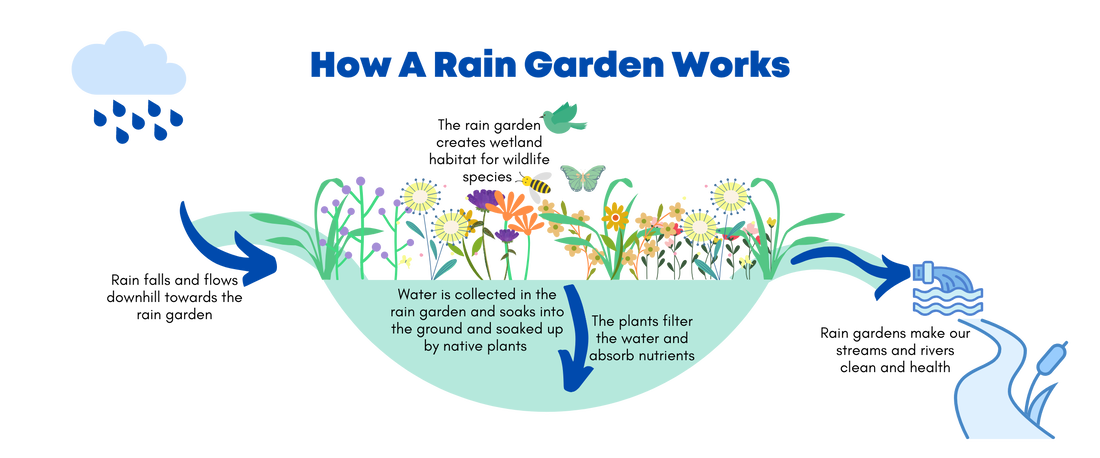What Is A Rain Garden?
At its most basic, a rain garden is a low-lying area which collects water and allows for water to soak into the ground instead of flowing directly into a storm drain or waterway. Rain gardens should be established in areas where water runoff is frequent. Ideal locations for rain gardens are near gutters or parking lots. Rain gardens decrease erosion, filter water and create habitat for wildlife.
How To Get Started
Designing your rain garden begins with choosing the best spot! A rain garden should be placed near a downspout, gutter or other drainage area. The most important thing to keep in mind when designing your rain garden is to plant it in an area where water is frequently being drained. Choose the lowest area in your yard for the best results. Once you have selected your spot, you can dig out the area to create a ponding area. Mix in a well drained soil mixture and plant some native wildflowers, sedge and grasses. The establishment of a rain garden will be time-intensive, but is a rewarding project for any homeowner. You can see a detailed guide to establishing a rain garden in by checking out the PDFs below.
Plant Your Garden
Planting native plants is highly recommended in a rain garden. Plants native to Tennessee will provide the best habitat for birds and pollinators, and will also do the best job filtering and soaking up water. Your rain garden's plant need to be well-suited for moist to wet soil conditions. You can find a list of recommended plants below. You'll likely be able to buy them from a local plant nursery.

